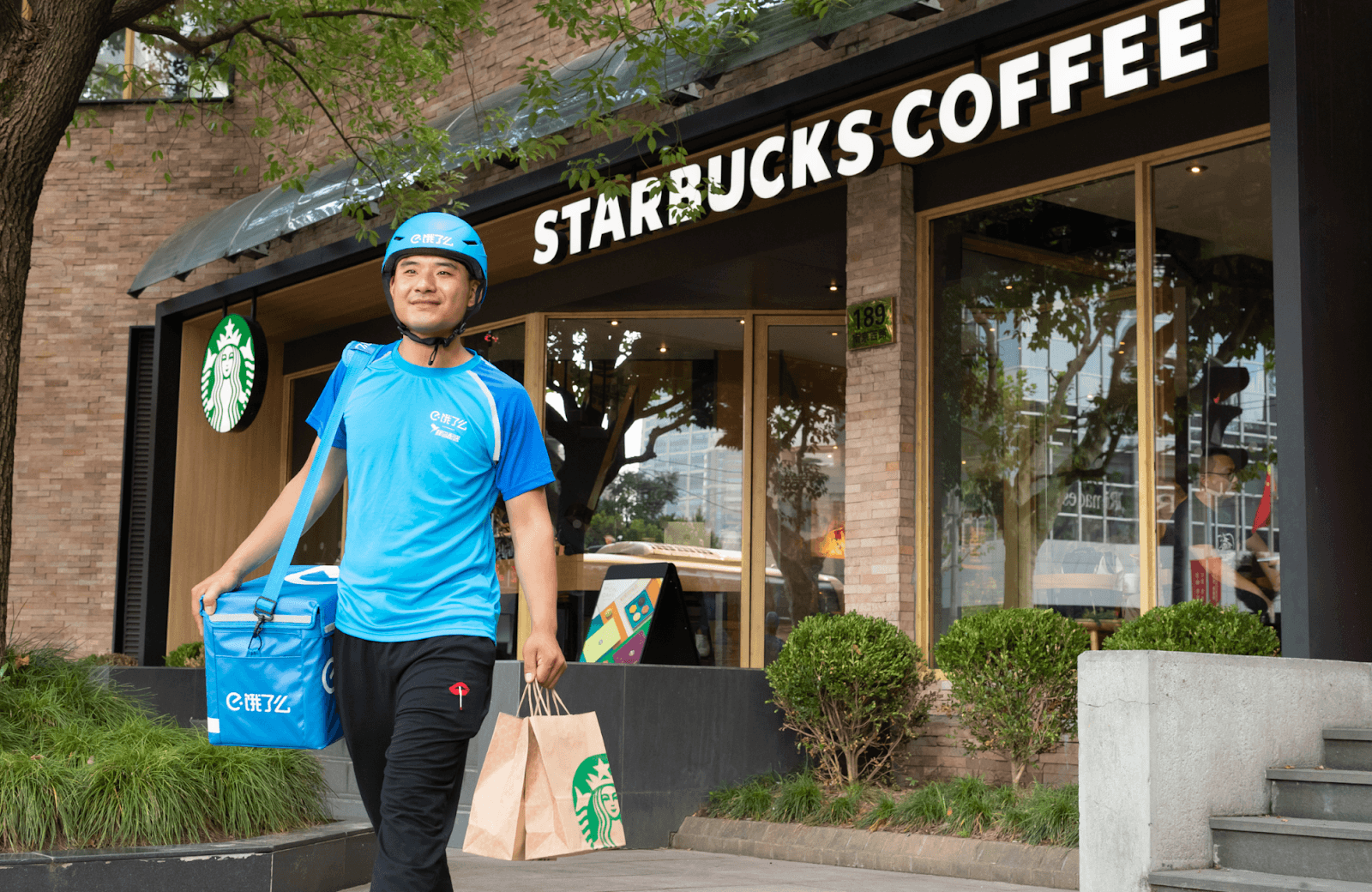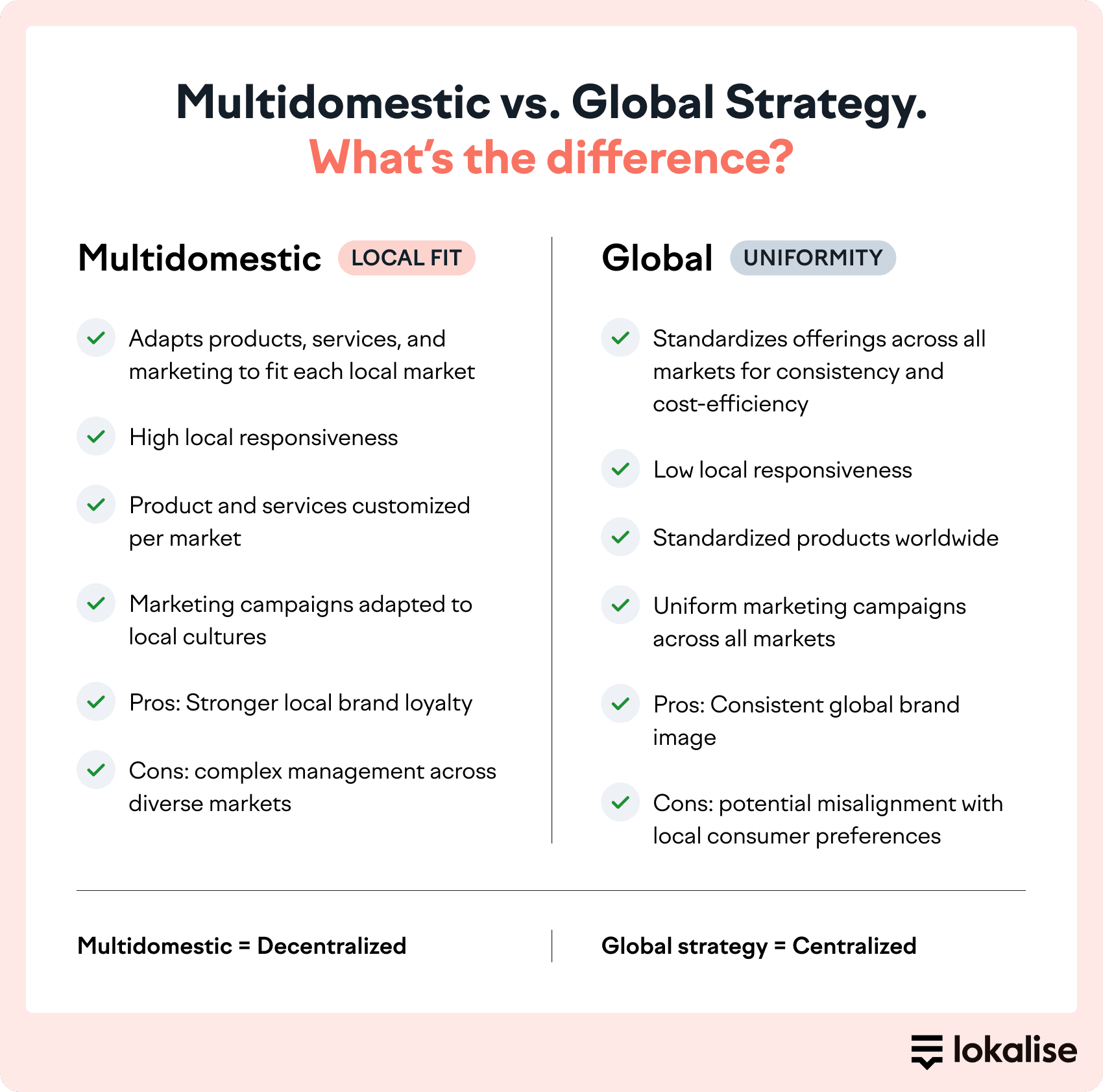Key components of a multidomestic strategies
To succeed with a multidomestic strategy, companies need to focus on a few essential steps that help them adapt to local markets, connect with customers, and stay competitive.
1. Establish a strong local presence
To truly connect with a market, you need strong relationships with local suppliers, distributors, and consumers. This means understanding their culture, language, and business practices.
Learning from Starbucks’ multidomestic strategy
In 2018, Starbucks in China partnered with Alibaba to offer delivery services and design stores that reflect Chinese traditions, which helped them connect with local consumers.
The coffee giant worked with Alibaba to make the most of their platforms like Ele.me for delivery and Hema supermarkets for localized operations. Additionally, they created a virtual store in Alibaba’s ecosystem, allowing customers to connect with the brand across platforms.

In 2018, Starbucks partnered with Alibaba as part of their multidomestic strategy efforts (source)
So, what can you learn from Starbucks?
- Collaborating with trusted local companies can help you break into the market faster
- Use local insights to customize your offerings, and make sure the experience you offer feels personal and relevant
- If you have the resources, meet customers where they are by integrating digital and physical experiences
But what if you don’t have immediate access to local partners?
2. Invest in market research and development
Success comes from understanding the cultural, economic, and regulatory landscape of each market. Yes, this takes time and resources, but it’s incredibly important for creating products and services that resonate.
Unilever’s “inclusive vision of beauty”
Unilever is a great example of redefining the messaging of their core product to take into account multiple markets. In a way, their multidomestic strategy prevailed their global one. The company has taken significant steps to promote inclusivity in its skincare portfolio.
Unilever removed terms like 'fair,' 'white,' and 'light' from product packaging and communications, and decided to rebrand products such as Fair & Lovely to align with a more inclusive vision of beauty.

Old Unilever product name “Fair & Lovely” was criticized for suggesting a singular ideal of beauty (source)
Unilever dominates the market in South Asia, with India having the largest market share, but does this messaging resonate with women of color? Not really.
What can you learn from this multidomestic approach?
- Realistically evaluate whether your messaging is excluding or offensive
- Be wary of product names and descriptions, and make sure your communications reflect the cultural values and sensitivities of each market
- Take proactive steps to address societal issues, such as harmful beauty stereotypes
We already touched upon marketing a bit, but lets take a closer look as it is extremely important for creating a strong multidomestic strategy.
3. Adapt your marketing and offerings
To resonate with customers, your marketing and product offerings must reflect local tastes and trends. This means you need to understand what matters most to each audience—whether it’s cultural preferences, lifestyle habits, or even how they engage with your brand.
How Netflix won over South Korea
Netflix’s success in South Korea highlights a smart application of a multidomestic strategy. The company decided to invest in Korean content (does “Squid Game” ring a bell?), and accomodate local payment preferences.
In April 2023, Netlix announced they’ll be investing $2.5 billion in Korean content over the next four years. It positioned itself as not just a streaming platform, but one deeply connected to Korean culture.
So, what lessons on multidomestic strategy does this bring to you?
- Understanding local tastes and preferences is key, so make sure to invest in localization
- Small adjustments, like offering region-specific payment methods, can remove barriers for customers and increase adoption
- Consider how your localized offerings can showcase your brand’s global strengths while aligning with local interests









